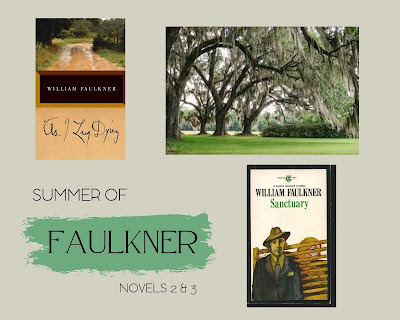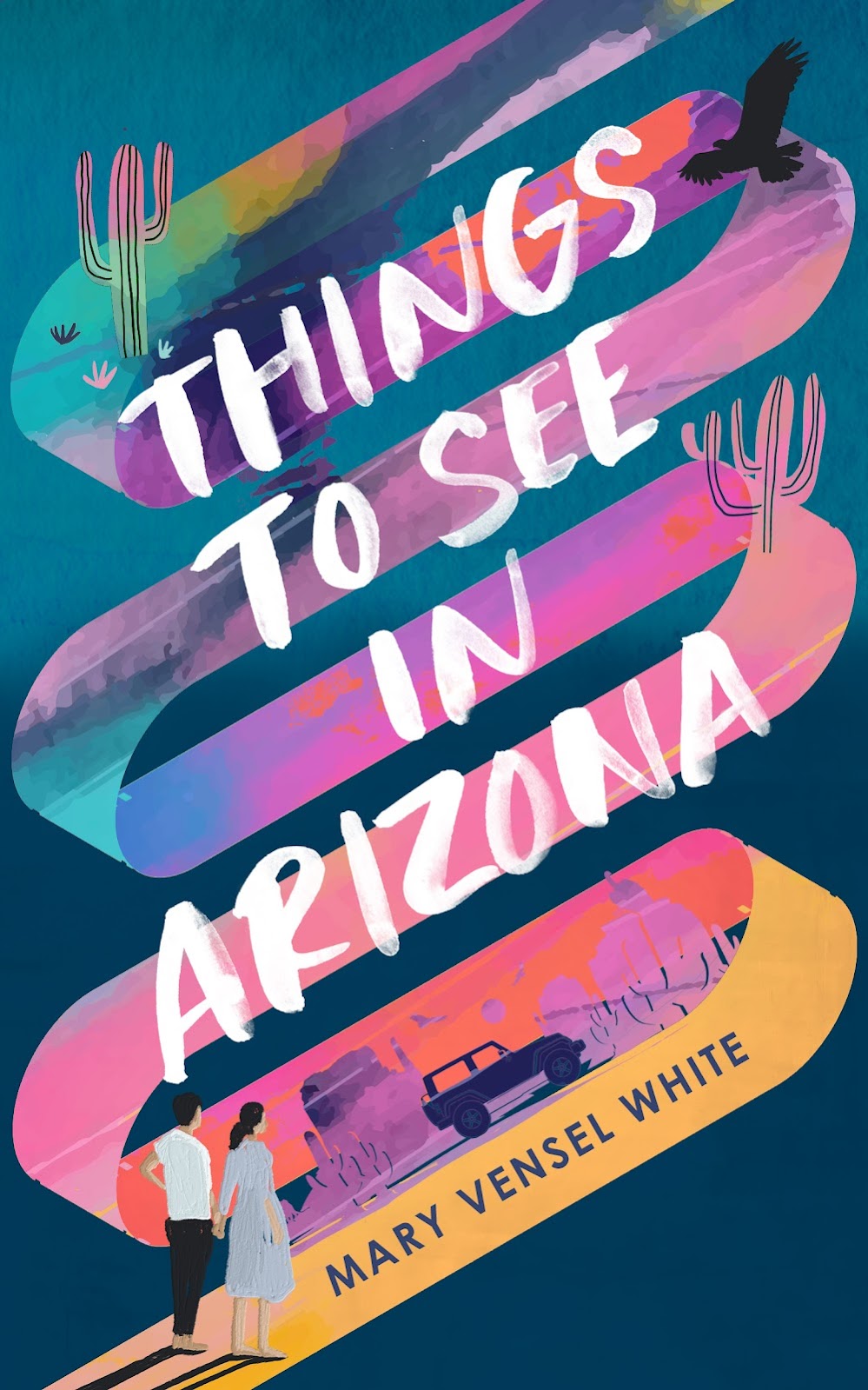I often think there’s no better place to read a book than on an airplane. Suspended between places with few distractions (especially if you have earplugs), it’s a prime opportunity for a fictional world to take over. And maybe another fantastic place to read a book is on vacation, when perhaps you’ve put the concerns of work and everyday life on the back burner. It follows that maybe reading a novel on a plane before or after a vacation is the best of all. After experiencing three Faulkner novels (so far) this summer, I can tell you that it’s particularly suited for reading him. Faulkner is a big mood. His stories are immersive, each with its own language and method. Particularly the method. Reading his novels in a single sitting increases accessibility; there’s no reorientation period as there might be if you read in segments during breaks from your normal, busy life. And so, I give you my thoughts on As I Lay Dying and Sanctuary.
When I chose the novels for my summer project, I selected
five books in chronological order during a particularly productive writing
period of Faulkner’s life. The historical notes on the first three novels I've read are
interesting. Of the first, the author stated, “I had just written my guts into The
Sound and the Fury though I was not aware until the book was published that
I had done so, because I had done it for pleasure.” Faulkner bounced between
writing what he wanted and writing to make money over the course of his entire
career, and it’s not surprising that what is probably his most critically lauded novel was an
act of creative passion.
Of Sanctuary, however, he wrote:
“To me it is a cheap idea, because it was deliberately conceived to make money. I had been writing books for about five years, which got published and not bought…I took a little time out, and speculated what a person in Mississippi would believe to be current trends, chose what I thought was the right answer and invested the most horrific tale I could imagine and wrote it in about three weeks.”
The editor who received Sanctuary told Faulkner he couldn’t
publish it, or they’d both end up in jail. In need of money, Faulkner took a
job in a power plant, shoveling coal during the night shift. Between midnight
and 4 a.m., when there was less to do because everyone was sleeping, he wrote
As I Lay Dying in six weeks, “without changing a word.” He told the publisher, “by
it I would stand or fail.” Another novel, it would seem, inspired by pure,
creative passion.
By then, he had forgotten about Sanctuary but undertook a comprehensive
rewriting when asked. He claimed to make a “fair job of it” and hoped not to “shame”
the other two novels. He seemed to know that it was in another category
altogether, and I certainly found it so.
As I Lay Dying is the story of the Bundren family. It opens
with the point of view of Darl, who observes his older brother, Cash, building
a coffin for their mother, who lies in the house nearing death. There’s some discussion
about whether he should be doing this right outside the window where Addie,
their ailing mother, can see. Everyone seems agitated by the sound of the
sawing and hammering. And with these first images and sounds, Faulkner sets a
mood and tone that masterfully prevails throughout the novel.
The Bundrens are a hardscrabble, farming family who can
never seem to make out right. Bad luck, the patriarch of the family would
claim. Throughout the novel, Anse Bundren bemoans his fortune: “I have heard
men cuss their luck, and right, for they were sinful men. But I do not say it’s
a curse on me, because I have done no wrong to be cussed by.” This is up for
debate throughout, not only in relation to Anse but for each character. Cash and
his brooding brother, Darl, the sole daughter of the family, Dewey Dell, whose
personal problem weighs more heavily on her than her mother’s impending death, Jewel,
the mother’s favorite, and the youngest, Vardaman, who possibly has mental
disabilities and associates his mother’s death with a fish he caught earlier
the same day.
Like The Sound and the Fury, As I Lay Dying rotates points of
view but each chapter is short and immersive, and the effect of the blending
of these scenes is quite mesmerizing, like a collage around Addie. The family’s
matriarch was tough and bitter; she has requested that her body be delivered to
Jefferson to be laid with her ancestors—although she knew this would cause complications
and expense her family couldn’t really afford. Faulkner gives Addie a voice,
post-mortem, in a chapter when she recounts the birth of each child and the
frustrations of her life.
The novel maintains a tragic tone laced with dark humor, as
the family carts Addie’s body while vultures circle above. You wouldn’t think
you would laugh about a scene when they attempt traversing a river and the body
lurches into the water, but you do. It’s no farce, though; the novel speaks volumes
about the South and the struggles of farmers, about roles for women and sexuality,
and a new generation shackled by the demands of family and tradition and the past.
If I had one thing to say about Sanctuary, it would be that
the content is unpleasant from start to finish, really. No character is truly likable or, more importantly, particularly sympathetic. As Faulkner claimed, it was “the
most horrific tale” he could imagine. In the story, a young debutante named
Temple Drake arrives at the home of a bootlegger after a car crash. It’s a house of horrors, as she is attacked several times throughout the night, becomes
semi-intelligible due to trauma, and is kidnapped by an impotent criminal named
Popeye and eventually, after suffering more abuse, ends up in a Memphis
brothel.
Although the book seems to be an attempt at a potboiler (those “trends”
Faulkner talked about), the author can’t help but draw commentary about women’s
sexuality through the characterization of Temple herself, a young woman who
seems to flirt with danger until it comes to her in severe fashion. The novel
has something to say about the South during prohibition, a time that encouraged
lawlessness, and about alcoholism—the car is crashed by Gowan Stevens, an alcoholic
and Temple’s companion on that fateful day. But again, most of the content is
just…well, unpleasant. Much has been said about the famous scene (or lack of
scene) with the famous object—but I’ll leave that for you to find out.
Sanctuary is written without shifting point of views and much
of the literary flair of Faulkner’s other novels. But again, the author was
writing with a certain thing in mind, for the broader audience he imagined. And,
dear readers, it worked. The success of Faulkner’s potboiler in 1931 freed him from financial worries, for the most part.
Next up: a reread of Light in August, the book I remembered
as a favorite, to be followed by the last book of my summer project, Absalom,
Absalom! Fortunately, I still have some summer plane rides left.
















0 comments:
Post a Comment